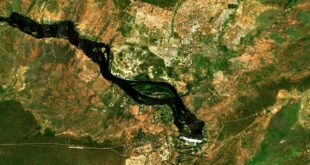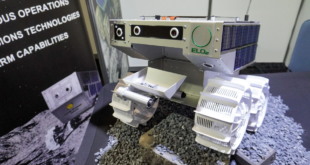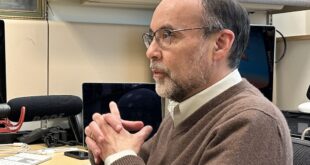
Australia’s Commonwealth Scientific and Industrial Research Organisation (CSIRO) has released its space exploration roadmap that sets out a path for Australian space industry and research organizations to more fully support and participate in international space science and exploration initiatives, particularly international efforts to reestablish a human presence on the Moon.
The report rolls out this sector-wide ‘lunar challenge’ describing it as “an exciting opportunity for Australian industry to contribute to a common goal aimed at growing the size of our domestic space industry to $12billion by 2030,” according to the announcement.
Meeting the ‘lunar challenge’ will involve building capabilities in four areas: autonomous robotic systems, in-situ resource utilisation, habitat and life support, and power and propulsion. A group already exists for international coordination, with the aim of expanding human exploration and presence in low-Earth orbit, and on the Moon and Mars, over the next two decades.
Australian space sector support for the lunar challenge could also provide opportunities to grow existing relationships with global partners, including international space agencies.
The challenge is also meant to inspire future generations, just as the Apollo program did in the 1960s and 1970s.
“Our space roadmap charts a course for economic growth using space, and champions a new era of space exploration to inspire our children with the power of science to make the ‘impossible’ possible,” said Dr. Larry Marshall, Chief Executive of CSIRO. “Our existing space industry is built on a foundation of trust earned 50 years ago when we enabled the world to see mankind touch the Moon – that kind of inspiration is a key ingredient in supercharging growth in new industries, new jobs, new STEM talent and developing a dynamic nation where the sky is no longer the limit.”
The report, developed in consultation with industry, presents three key opportunity areas for potential development, all of which could support the growth of Australia’s space economy. The three areas are: building capabilities in Earth observation from space, satellite communications, and positioning, navigation, and timing (PNT) data; taking advantage of Australia’s geographic position in the southern hemisphere; and harnessing Australia’s diverse industrial and research strengths across astronomy, mining, manufacturing, medicine, agriculture, and robotics for Earth-based industry.
“CSIRO’s unique position creates a bridge between research and industry to deliver breakthrough innovation to Australian SMEs and start-ups across the space value chain,” Marshall added.
Dr. Megan Clark, Head of the new Australian Space Agency, endorsed the roadmap.
“This Roadmap introduces some key scientific opportunities which Australia can utilise to drive engagement and growth across the space value chain,” she said. “Together, the Australian Space Agency, CSIRO and other key partners will drive the full potential of our nation’s capabilities and competitive advantages, optimising our R&D opportunities and targeting growth across the space value chain to build a space sector of which all Australians can be proud.”





